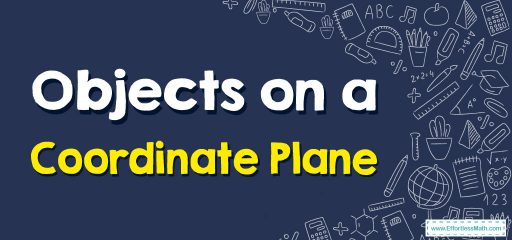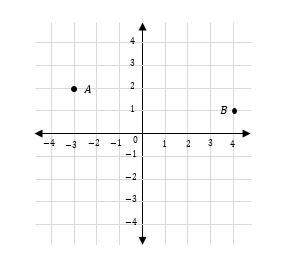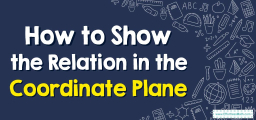Objects on a Coordinate Plane
In this tutorial, we will guide you through the process of locating objects using coordinates.
Whether you're trying to locate a point on a map or find a specific location in a large dataset, understanding how to use coordinates is a fundamental skill in various fields such as geography, astronomy, engineering, and more.

In this tutorial, we will guide you through the process of locating objects using coordinates.
Whether you’re trying to locate a point on a map or find a specific location in a large dataset, understanding how to use coordinates is a fundamental skill in various fields such as geography, astronomy, engineering, and more.
A step-by-step guide to finding objects on a coordinate plane
Coordinate planes are made of a horizontal number line known as an \(x-\)axis and a vertical number line known as a \(y-\)axis.
The \(x-\)axis and \(y-\)axis cross each other at zero.
An ordered pair (\(x ? y\)) shows the position of a point on a coordinate plane.
The first number is known as an \(x-\)coordinate.
The second number is known as a \(y-\)coordinate.
here’s a step-by-step guide to finding objects on a coordinate plane:
- Understand the coordinate system: The first step is to understand the coordinate system being used. In most cases, a coordinate plane is a two-dimensional Cartesian coordinate system that uses X and Y axes to define the location of objects on a flat surface. The X-axis represents the horizontal direction, and the Y-axis represents the vertical direction. Each point on the plane is identified by a set of coordinates (X, Y).
- Identify the coordinates of the object: The next step is to identify the coordinates of the object you want to find. If you have the exact coordinates, skip to step 4. Otherwise, you may need to estimate the coordinates based on other information.
- Estimate the coordinates: To estimate the coordinates of an object, you can use other reference points or landmarks as a guide. For example, if you know that the object is 2 units to the right of point A and 3 units above point B, you can use this information to estimate the coordinates of the object.
- Plot the coordinates: Once you have the coordinates of the object, you can plot it on the coordinate plane by locating the correct X and Y coordinates and marking the point with a dot or other symbol.
- Verify the location: After plotting the coordinates, you should verify that the location of the object is correct. You can do this by using other reference points or landmarks to confirm that the object is in the correct position.
By following these steps, you can locate objects on a coordinate plane by identifying their coordinates and plotting them on the plane.
Whether you’re working with a map, a dataset, or a graph, understanding how to use coordinates is a crucial skill in various fields such as science, engineering, and mathematics.
Objects on a Coordinate Plane – Examples 1,2
According to the coordinate plane, discover the requested coordinates.
1) \(y-\)coordinate of point A
2) \(x-\)coordinate of point B

Solution:
1) This position on the \(y-\)axis is 2 units above the origin.
So, the \(y-\)coordinate of point A is 2.
2) This position on the \(x-\)axis is 4 units on the right of the origin.
So, the \(x-\)coordinate of point B is 4.
Related to This Article
More math articles
- Algebra Puzzle – Challenge 57
- SHSAT Math – Test Day Tips
- How is the GED Math Scored?
- How to Scale a Function Vertically?
- PSAT 10 Math Practice Test Questions
- Direct, Inverse, Joint, and Combined Variation
- How to Add and Subtract Rational Numbers
- 6th Grade ISTEP Math Worksheets: FREE & Printable
- How to Prepare for the 8th Grade STAAR Math Test?
- Full-Length 7th Grade PSSA Math Practice Test-Answers and Explanations




















What people say about "Objects on a Coordinate Plane - Effortless Math: We Help Students Learn to LOVE Mathematics"?
No one replied yet.